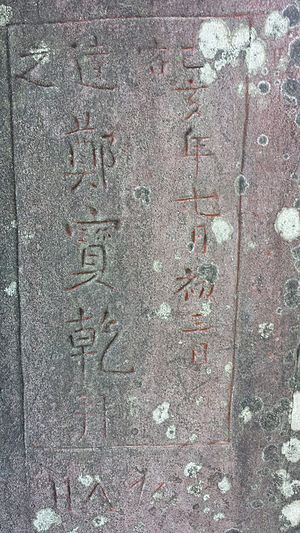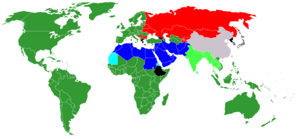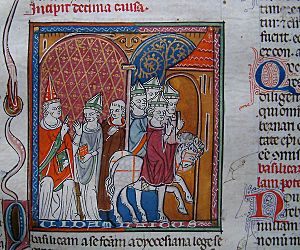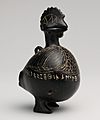Alphabet facts for kids
- This article is about alphabets in writing. The article about alphabets in computing is at Alphabet (computer science), and the company is at Alphabet Inc.
An alphabet is a writing system. It is a special list of symbols used for writing. The main symbols in an alphabet are called letters. In an alphabet, each letter usually stands for a sound or a group of similar sounds.
To make writing easier to read, alphabets also use other signs. These include punctuation marks, spaces between words, and a standard way to read (like from left to right).
The word alphabet comes from the first two letters of the ancient Phoenician alphabet: Aleph and Beth.
The Roman alphabet (also known as the Latin alphabet) was first used in Ancient Rome. People used it to write the Latin language. Today, many languages around the world use the Latin alphabet. It is the most common alphabet used today.
Contents
How Alphabets Developed
It seems that the idea of an alphabet, which uses sounds for writing, was invented only once. After that, people copied and changed it to fit many different languages. Even though no alphabet is perfect for its language, it is flexible enough to work well for almost any language. This was a truly special invention!
Our alphabet is called the Roman alphabet. Other alphabets include the Cyrillic and many more. All these alphabets come from the ancient Greek alphabet. The Greek alphabet was first used around 1100 to 800 BC.
The Greek alphabet probably came from the Phoenician writing system. The Phoenician script appeared a bit earlier and had some similar letter shapes. Before the Greeks, no ancient writing system, whether an alphabet or not, had pure vowel sounds. The Greek alphabet even has two different vowels for 'e' and two for 'o'. This helped people tell the difference between long and short sounds.
It is clear that a lot of thought went into both the Phoenician invention and the Greek changes. However, we do not have many details about how either process happened.
Different Alphabets Around the World

Here is a list of some alphabets and examples of languages that use them:
- Proto-Sinaitic script: This was one of the earliest known writing systems that used sounds.
- Phoenician alphabet: Used in ancient Phoenicia.
- Greek alphabet: Used for the Greek language.
- Roman alphabet: This is the most commonly used alphabet today.
- Arabic alphabet: Used for Arabic and Persian.
- Hebrew alphabet: Used for Hebrew, Ladino (mostly in Israel), and Yiddish.
- Devanagari: Used for Hindi and other languages in India.
- Cyrillic alphabet: This alphabet is based on the Greek alphabet. It is used for Russian and Bulgarian.
- Hangul: This is the alphabet used for the Korean language.
Other Ways of Writing
Some writing systems do not use letters like alphabets do. However, they still represent sounds, at least in part. For example, many systems use symbols for whole syllables. In the past, many cultures used these kinds of writing systems. Today, they are mostly used by languages spoken in Asia.
- The Chinese writing system started around 1200 BC during the Shang dynasty. Back then, it mostly used "pictograms," which are pictures that show words or ideas. Now, only about 1% of Chinese characters are pictograms.
- The Japanese language uses a mix of Chinese writing (kanji) and two writing systems called hiragana and katakana. These are syllabaries, meaning each symbol stands for a syllable. Modern Japanese also often uses romaji, which is Japanese words written using the Roman alphabet.
- The Koreans used Chinese writing in the past. But they later created their own unique alphabet called hangul.
Images for kids
-
Charles Morton's 1759 updated version of Edward Bernard's "Orbis eruditi", comparing all known alphabets as of 1689
-
A Specimen of typeset fonts and languages, by William Caslon, letter founder; from the 1728 Cyclopaedia
-
A specimen of Proto-Sinaitic script, one of the earliest (if not the very first) phonemic scripts
-
Codex Zographensis in the Glagolitic alphabet from Medieval Bulgaria
-
Zhuyin on a cell phone
-
Ge'ez Script of Ethiopia and Eritrea
See also
 In Spanish: Alfabeto para niños
In Spanish: Alfabeto para niños












